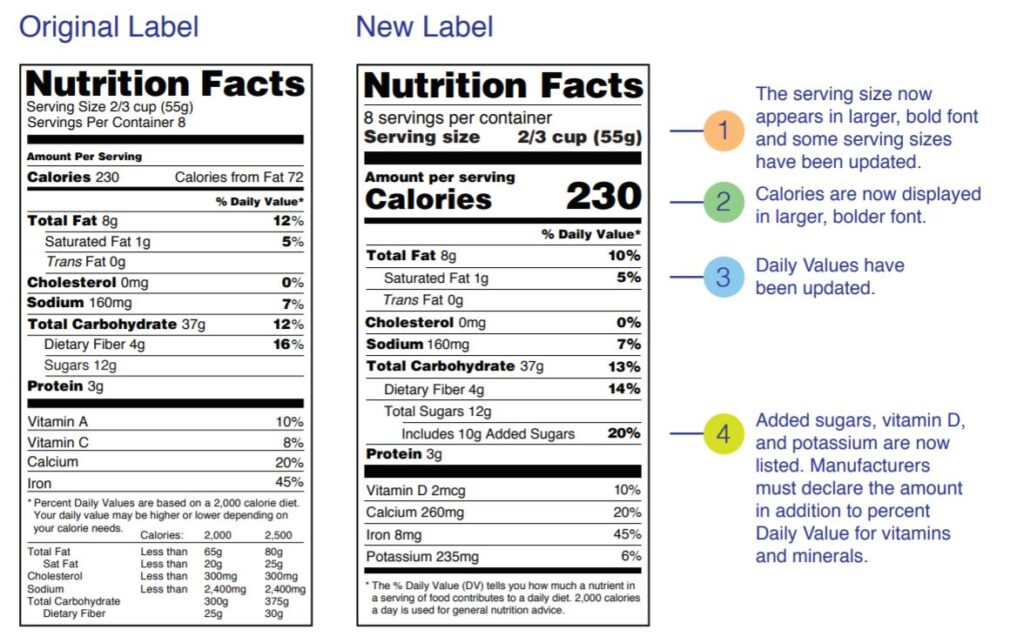Have you noticed a change to the nutrition labels you find on your food? The FDA updated their requirements for what is required on the label and how it looks. They initiated this change “based on updated scientific information, new nutrition research, and input from the public.”1 Did you know they haven’t made changes to the labeling system in over 20 years?! It was absolutely time for an update. Curious as to what has changed? Keep reading to find out!

First, you can read it! You should notice that in the new version the serving sizes are in large, bold font. No squinting required! The serving size is also representative of what a typical person would eat or drink today; not 20 years ago. Please note that the serving size is not a recommendation of how much you should be eating, but a reference as to what the nutritional intake would be for that particular serving size.
Second, calories are also in larger and bolder font to make it easier on the consumer to find and read. The calories needed vary from person to person based on gender, height, weight, age, and physical activity level. To learn more please visit click here.
Third, the Daily Value Percent (DV%) listed, lets you know how much a nutrient plays a roll in the total daily diet.2 A general rule of thumb is a DV of 5% or less is considered low and a DV % of 20% or higher is considered high.
Fourth, the nutritional label has been updated overall. Calories from fat has been removed because research shows the type of fat consumed is more important than the amount.3 Vitamin A and C are no longer required because research has shown that most people are not deficient in these two vitamins today. Nutritional information on these two vitamins is strictly voluntary. Added Sugars is a new item added to the label. Consuming too much sugar and staying within a caloric range can make it hard to meet nutritional needs. Vitamin D and Potassium have been added to the label because research has shown that the majority of people do not get enough of these in their diet. Calcium and Iron have remained on the label because most folks do not get enough of them in their daily diet.
By reading the label and following the guidelines you can help reduce the risk of developing some health conditions like high blood pressure, cardiovascular disease, osteoporosis, and anemia.4
For more information please visit:
